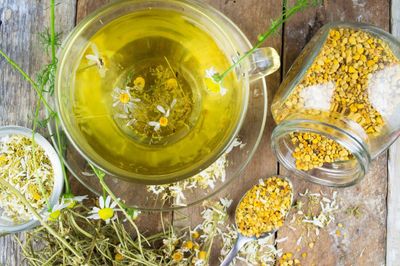It’s wise to know the facts before eating chamomile plants. (Caution: Never eat any plant if you aren’t 100 percent sure!) Read on for the specifics of edible chamomile.
Is Chamomile Edible?
Yes, chamomile leaves and flowers are both perfectly safe to eat, with a couple of caveats.
Be sure the herb hasn’t been sprayed with pesticides or herbicides. Use chamomile with care if you’re allergic to ragweed, as chamomile may trigger allergic reactions in some individuals.
Eating Chamomile Plants
Now that the warnings are out of the way, here are some suggestions for using edible chamomile:
Most people use the blooms, as the bright yellow centers have a mild, apple-like flavor. Brown a few crushed or dried chamomile flowers in hot butter, then stir them into oatmeal or other hot cereal. Make chamomile cordial with apple brandy, a small amount of honey, and a few fresh or dried chamomile flowers. You can also add orange, lemon, overripe berries, cinnamon sticks, or even peppercorns. Allow the mixture to sit overnight to let the flavor develop, then strain. Place the cordial in a clean glass bottle or jar and store it in the refrigerator. Pour the cordial over ice cream or use it as a glaze on desserts. Add a small amount of chamomile flowers to the crunchy topping next time you make apple, peach, or berry crisp. Create chamomile liqueur by mixing dried chamomile flowers with vodka and small amounts of honey and lemon zest. Let the liqueur infuse for two to four weeks, then strain well. Infuse chamomile flowers in almond oil. Use the chamomile oil for salads or fish dishes or mix it in mayonnaise to add flavor to sandwiches. Add a few blooms to add color and flavor to a fresh green salad. You can also use leaves, although they may have a somewhat bitter flavor. Make chamomile tea. Stir 2 to 3 tablespoons (30-44 ml.) of crushed chamomile flowers in a cup (237 ml.) of boiling water. Allow the tea to steep for five to ten minutes, then strain and drink. Add honey and lemon to taste, if you like.
